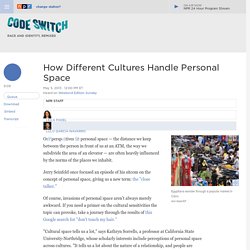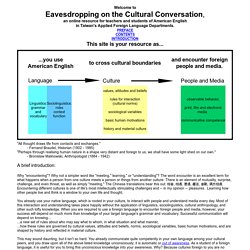

NCSSFL-ACTFL Can-Do Statements. Learning targets, expressed in terms of Can-Do Statements provide an important venue for setting learning goals to provide language learners the opportunity to take responsibility for their own learning through the establishment of positive short-and long-term learning goals and to monitor their own learning experiences to ensure accomplishment of these goals.

SMART (specific, measurable, achievable, relevant, time bound) goals, such as the Can-Do Statements, provide a clear direction to focus learners’ language learning efforts that will help them meet these goals. Such a constructivist, or sociocultural worldview, regards learning as an ongoing process where learners are continually involved in self-assessment and self-reflection about their own learning ultimately aimed at developing self-regulation and self-efficacy.
References. Intercultural Learning // Purdue College of Liberal Arts. A collaborative effort by the faculty at Purdue University (the SLC Intercultural Learning and Study Group) and the Ohio State University WEBINAR #1: “New messaging and a new spokesperson for world languages and their place in higher education” Janice M.

Aski & April D. Weintritt (Ohio State University) October 15, 2020 at 4:00pm EST Link to Webinar #1 PowerPoint presentation used in Webinar #1. Hubicl - Home. Every Culture Appropriates - The Atlantic - Pocket. A woman walks with her two daughters at a busy street in downtown Shanghai July 11, 2013.

Carlos Barria / Reuters Meet the Death Metal Cowboys of Botswana. In black leather decorated with metal studs, they play a pounding style of music that people who know more than me trace to the British band “Venom” and its 1981 album Welcome to Hell. Question: Is this cultural appropriation? Why or why not? The question is inspired by a spasm of social-media cruelty that caught wide attention recently. For once, the story has a happy ending. Yet the idea persists that there is something wrong and oppressive about people of one background adopting and adapting the artifacts of another.
At Oberlin in 2015, a Vietnamese student shamed the dining hall into ceasing to serve its version of Banh Mi sandwiches Instead of a crispy baguette with grilled pork, pate, pickled vegetables and fresh herbs, the sandwich used ciabatta bread, pulled pork and coleslaw. All cultures have histories. Different languages: How cultures around the world draw shapes differently — Quartz. Let’s do a quick exercise.

Are you ready? Draw a circle in the box below. Don’t think too hard! Did you start at the top or bottom? How Different Cultures Handle Personal Space : Code Switch. Egyptians wander through a popular market in Cairo.

Amr Nabil/AP hide caption toggle caption Amr Nabil/AP Egyptians wander through a popular market in Cairo. Our perspectives on personal space — the distance we keep between the person in front of us at an ATM, the way we subdivide the area of an elevator — are often heavily influenced by the norms of the places we inhabit. What ‘personal space’ looks like around the world. By Amanda Erickson By Amanda Erickson WorldViews Analysis Analysis Interpretation of the news based on evidence, including data, as well as anticipating how events might unfold based on past events April 24 If you've traveled even a little bit, you’ve surely had the experience of sharing a public space with someone (or many someones) who wants to stand closer to you than you’d allow your partner most of the time.

It’s because personal space — how close we stand to our colleagues, our friends, strangers — varies widely between countries. Culture defined. Cultural levels and differences As the word culture can be used in the big C/little c sense, so it is often used to connote relative levels of refinement, cultivation or civilization between cultures.

When we speak of "advanced" or "primitive" cultures, we refer to technological and intellectual achievements, and not to some imagined level of humanness. For example, a small tribe of people in Papua New Guinea may not have the technological or intellectual sophistication of the Chinese, but both cultures are suited for their own needs. Both cultures have their problems as well! In these materials, I approach culture from a universalist point of view, meaning I assume all people by virtue of being human have an equal intrinsic value. Nonetheless, a cross-cultural encounter is not an invitation to introduce your cultural ideas about what people should and shouldn't do. Human history is the story of the confluence of peoples and borrowings of inventions and ideas. Interactive Outline. A brief introduction: Why "encountering"?

Foreign Language Teaching Methods: Culture. Welcome!

I'm Tom Garza, an Associate Professor in the Department of Slavic and Eurasian Studies, and the Director of the Texas Language Center at the University of Texas at Austin. Besides coordinating the program in Russian here at UT, my research interests are primarily focused on incorporating culture and cultural information into language teaching. While the two seem to be inextricably connected, we somehow forget, as teachers, that language without culture is not communication. So, what have the last two decades told us about the cultural quotient in our teaching? First, when the American Council on the Teaching of Foreign Languages introduced the first-ever provisional proficiency guidelines in 1984, they included guidelines for cultural competence.
Culture.